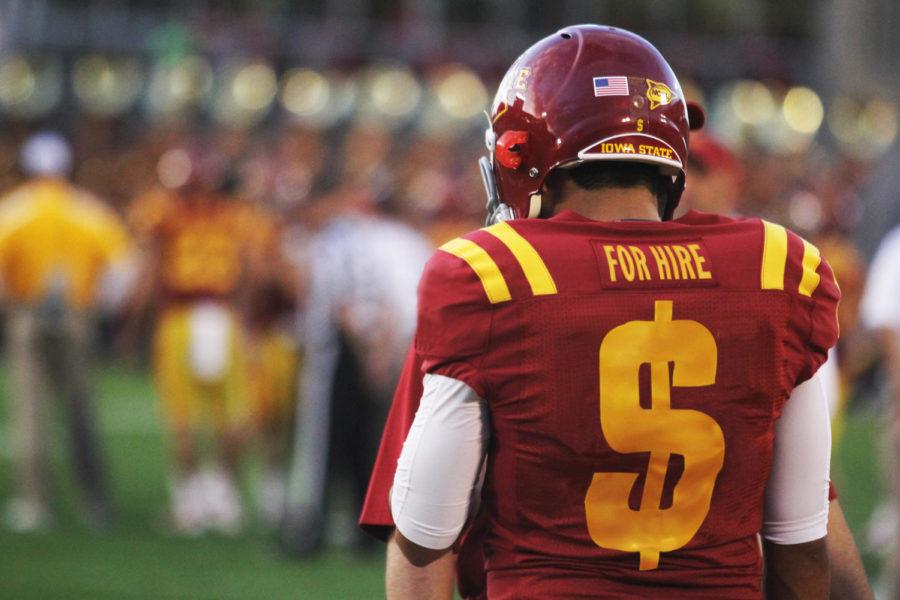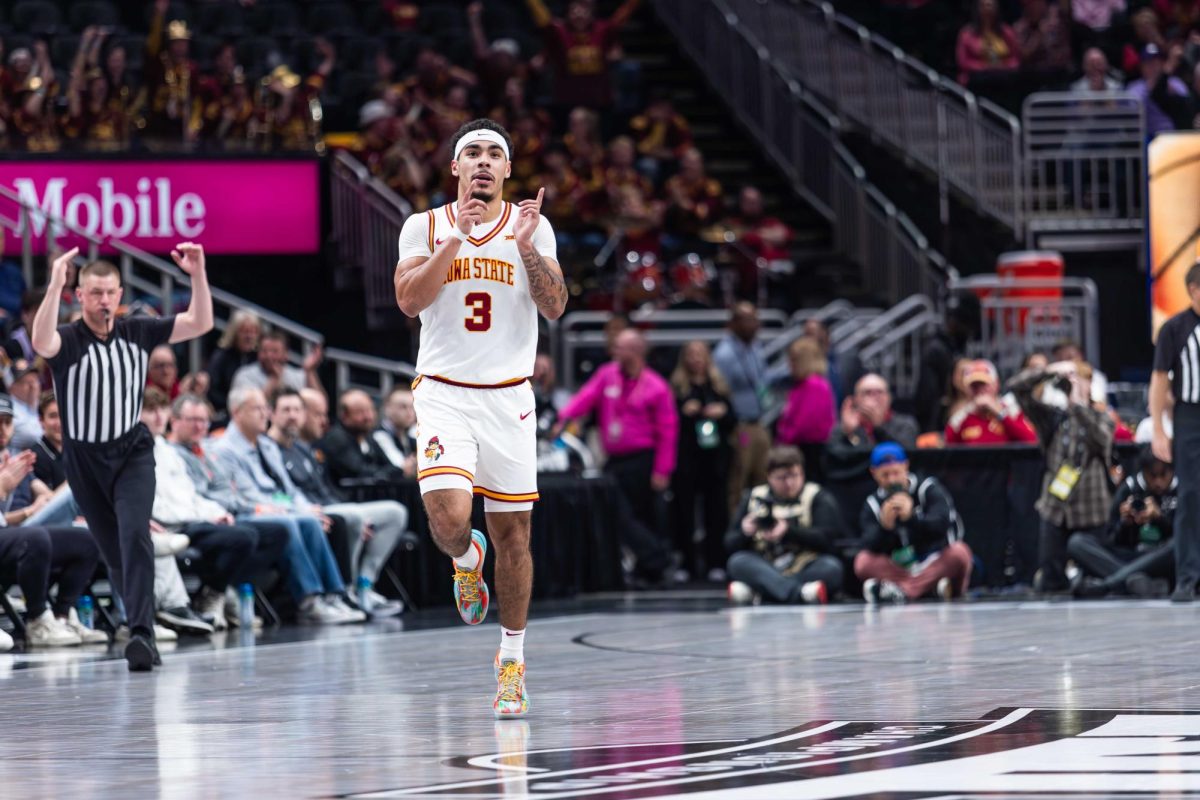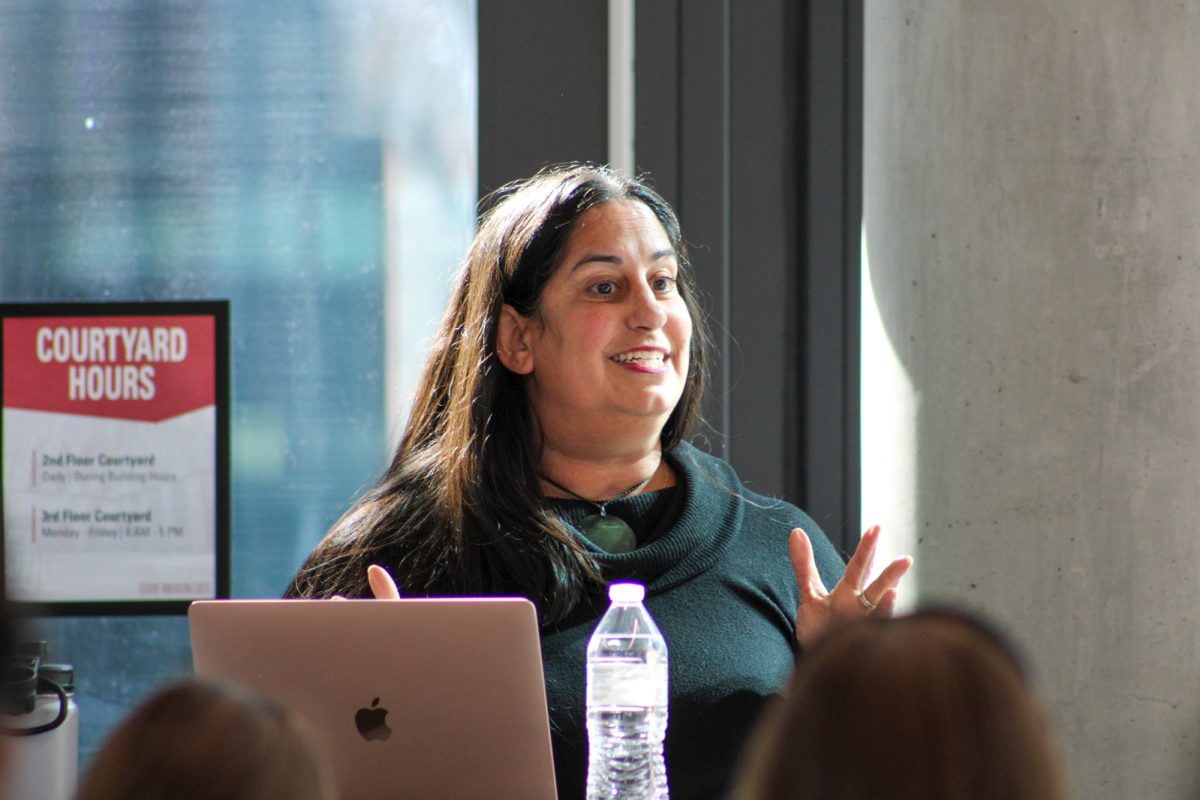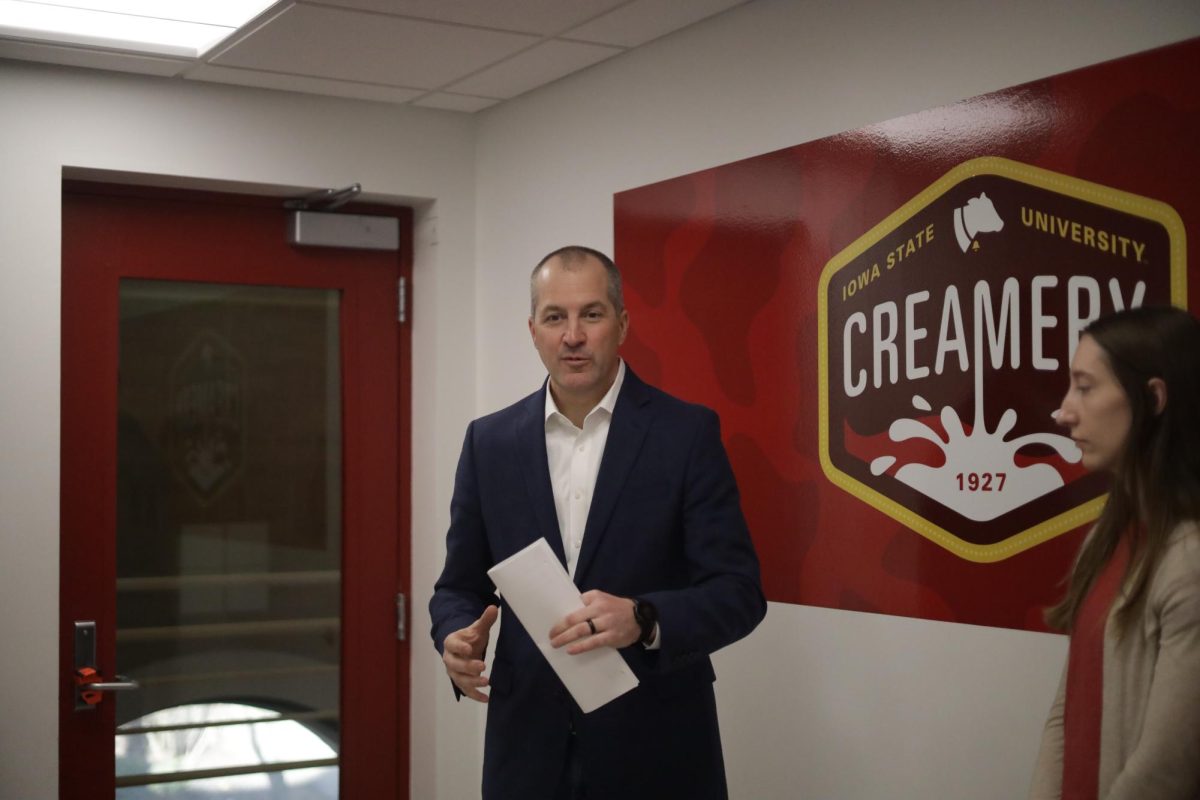Costs and benefits of unionization: Public status, ‘right to work’ complicate possibilities for ISU student-athletes
Though Northwestern football players unionizing is a different situation than what Iowa State’s players would face, it begs the question of whether student-athletes would ever unionize at Iowa State and what it would mean for the future of the athletic department.
June 11, 2014
The landscape of collegiate athletics has potentially reached a crossroad.
On March 26, 2014, the National Labor Relations Board ruled that the football players at Northwestern are employees of the university under the National Labor Relations Act. Northwestern appealed that decision with the NLRB review board, but if the initial ruling stands, the outcome could possibly extend to Iowa State.
But that process wouldn’t be simple.
Ron Deiter, professor of economics at Iowa State who teaches a class called Economics of Sports, said that were student-athletes on campus to unionize, it is likely that collegiate athletics in Ames would never be the same.
“The main issues that would be dealt with would include work conditions, how long you have to practice and work out and what you are going to get paid,” Deiter said. “In pro sports, there are salary caps and floors … and rules with regard to the ability to move from one team to another. These are things that have to be agreed on by both parties.”
Deiter’s synopsis of the new system as he believes it might look paints a mirror image of how professional sports leagues operate today, and would be most prominently characterized by a collective bargaining phase, which would set the terms for the new employee/employer relationship.
For that system to be instated at Iowa State, it would take more than an upholding of the NLRB’s initial ruling.
The ruling made by the NLRB pertains to private universities only and is not a blanket ruling because student-athletes at public universities would be required to comply with state labor laws to be considered employees.
Peter Ohr is the regional director of Region 13 of the NLRB, which handed down the Northwestern decision. Ohr said that labor laws differ from state to state, both in terms of which laws are on the books and how vaguely or specifically those laws are written.
Because of that, Ohr said that to assert that the ruling in the Northwestern case would classify all student-athletes across the country as employees would be “premature.”
For student-athletes at Northwestern who have already been officially classified as employees, proceeding with the unionization process would require a majority vote from the players. That vote already took place in late April, but the results of it will remain sealed until the NLRB review board hands down its final decision.
Depending on the decisions of the NLRB review board and the potential subsequent rulings from various courts of law, ISU student-athletes could theoretically be designated as state employees, as Iowa State is a state-funded institution.
The state of Iowa allows state employees the right to unionize, but Iowa is also a “right-to-work” state.
“Right-to-work” laws regulate contractual agreements between labor unions and employers and prevent the exclusion of non-union workers.
However, if the Northwestern ruling holds up, then the door may open for ISU student-athletes to vote on unionization, even though the process would be different and more complicated than it has been for student-athletes at Northwestern.
The changes that could potentially follow are numerous, far-reaching and difficult to project.
Were ISU student-athletes to unionize, Deiter said the most immediate change would be their classification as employees, which would allow them to be fired for cause and in many cases be forced to justify their presence on campus by the revenue they generate.
This would be a drastic alteration to how Iowa State deals with student-athletes under the current system of scholarship in trade for an athletic commitment.
Roberta Johnson, director of financial aid, said basketball and football are classified as full grant and aid sports, scholarships for which allow for tuition, fees and an amount for room and board.
Johnson said that the full monetary value of a scholarship for an out-of-state student-athlete comes to around $27,600. Numbers for in-state student-athletes are considerably lower.
Johnson added that the standard cost of attendance for a student-athlete from outside the state is approximately $32,000 per year. That leaves an approximate gap of $4,400 that a student-athlete is left to make up for on his or her own.
Johnson said that loans are available to scholarship athletes to cover that gap, but by NCAA rule, they are not allowed to exceed it.
“Right now, [universities] cannot pay that difference directly,” said Jamie Pollard, director of ISU athletic department. “Many of those kids who are in need get a Pell Grant and that grant covers that difference.”
Were the system to change, Pollard said the biggest difference would be that the university would provide the extra $4,400 instead of the federal government, which would come out of the fans’ pockets via raised ticket prices.
Pollard said that the student-athletes who qualified for Pell Grants would not be receiving any more money but that the money’s source would simply change.
“The irony is that those in need would not get any more money and those who do not have a need would get more money,” Pollard said.
One of the few extra benefits Iowa State is allowed to provide is health insurance for student-athletes unable to afford it, as all student-athletes are required to retain it.
Pollard also said that even though an out-of-state scholarship only amounts to $27,600, student-athletes actually receive more than that because the average cost to the university per athlete is around $65,000 per year.
Some of that $65,000 manifests as necessities, such as football pads. However, Pollard said that many of the extra costs also manifest as benefits, such as free clothing and athletic training, which critics of the current system fail to consider.
For those who do not believe a scholarship is fair compensation, Pollard said he frequently hears the argument about the pay gap between coaches and student-athletes.
The collective salary of coaches at Iowa State is listed at $10,352,062 on the university’s most recent expense report, which exceeds the monetary value of student aid provided to the roughly 460 student-athletes on campus by nearly $3,500,000.
However, Pollard said that reallocating some of the money used to pay coaches for the purposes of paying players would provide a circular problem that most critics of the collegiate system may not understand.
“People say, ‘Pay the coaches less,'” Pollard said. “If I pay Fred Hoiberg less … Fred Hoiberg leaves, so the kids that came here and demanded to be paid will not want to be here because the coach they wanted will not be here.”
Pollard also said that educational value extends beyond the monetary value of scholarships granted to student-athletes in the form of future earning potential as well as the ability to leave school absent any debt.
ISU athletic department generated $62,357,760 from its athletic programs, according the most recent report listed on the U.S. Department of Education’s website, and all of that revenue is coming from the football and men’s basketball programs — the only two sports at Iowa State that turn a profit.
However, Pollard said that the idea that Iowa State is rolling in profits that it is not sharing is a misguided notion because most generated revenue is used to enhance athletic programs.
“People say we are making all this money and I would argue that we are not making a lot of money. We have to put it all back into the program,” Pollard said. “The football players we have want to practice in the best possible facility and play for [the best coaches], and that is why they came to Iowa State.”
Another potential motivation toward student-athlete unionization besides financial compensation is that scholarships are typically only issued one year at a time, and the NCAA allows for the dismissal of an athlete for any reason, including lack of performance on the field of play.
“The NCAA says you can non-renew a student-athlete for any reason,” said David Harris, senior associate director of the athletic department. “But for us, we do not want to be in a situation where we are not renewing because [athletes] turned out not to be as good as we thought.”
While the ISU administration’s stance on this issue favors players, there are no guarantees.
Deiter said that other potential changes that could come with unionization at Iowa State may include the elimination of non-revenue generating sports because Iowa State actually loses money on its athletic programs outside of basketball and football.
Deiter also mentioned the possible disappearance of walk-ons, as well as potential work stoppages due to bargaining disputes that could cause the loss of part or all of a season.
Student-athletes would potentially be able to market themselves depending on the outcome of the bargaining agreement, but any money earned from playing or marketing would be subject to income taxes at the state and federal levels.
Finally, Deiter mentioned one of the largest concerns of unionization to the NCAA and its universities, which is competitive balance.
“One of the things that fans like to see is competitive balance,” Deiter said. “No matter who we root for, we like to believe our team has a chance of winning. I think pro leagues and athletes have recognized this as fairly important to the long-term viability and fan interest in sports.”
Deiter went on to say that an economic imbalance already exists for power conference schools in the Big 12 and SEC, and that the NCAA does not want that to get any worse.
Deiter said that because of the complicated and legal nature of the issue, he does not see mass student-athlete unionization throughout the nation on the horizon, and that includes Iowa State.
“There would be a lot of hassles and headaches [to unionization],” Deiter said. “I am not sure the benefits outweigh the costs.”
Harris, a former college athlete himself, echoed Deiter’s comments by putting into context his own experience.
“From my own personal experience, I feel very strongly about the benefits that a college education has brought to my career and my ability to provide for my family,” Harris said. “I have no issues at all with the arrangement that was ultimately made as far as me receiving my college education.”







